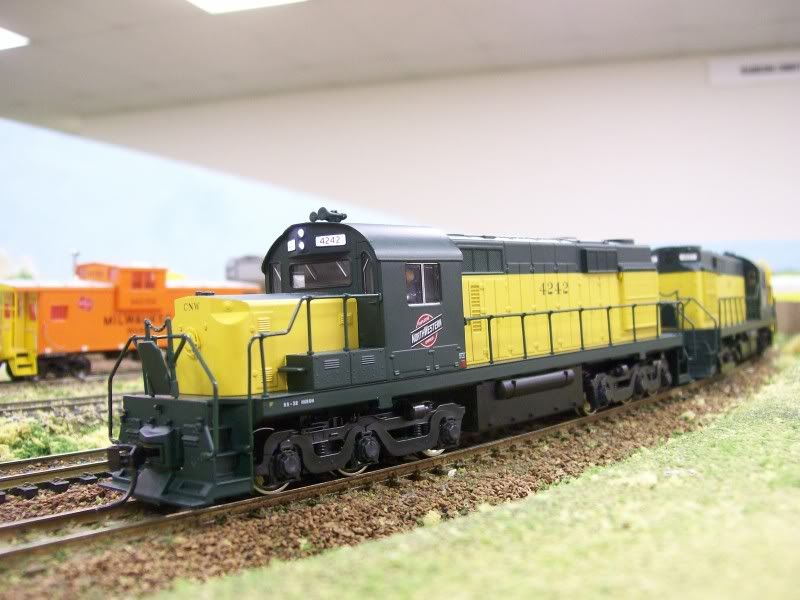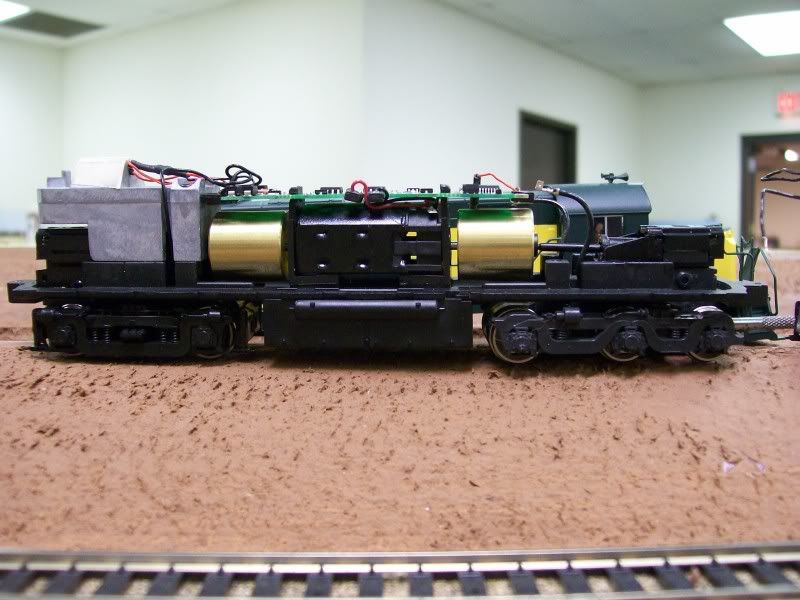I never thought that I’d have anything positive to say regarding the HO Atlas Trainman products, as my personal tastes have always been for the more highly detailed models. However, recently my financial ability to participate in this hobby has been changing (no pay raise going on 3 years, and family bills increasing all the time.)
In any case, I just purchased one Atlas Trainman CNW safety yellow and green Alco RS32 as a sample (before hopefully getting a few more) and it is one outstanding engine! The paint and detail are really good, typical of Atlas, with of course the drill locations pre-marked for those who will add their own grab irons. (I will not because I can’t do it neatly enough for my tastes and am usually unable to touch up paint to my standards, either). It runs great, pulls well enough (I had it dragging 32 freight cars right out of the box, but that did prove to be a little much due to wheelslip on my 0.4% grade.) 21 Athearn ore cars is a better train length for it on my layout (it seems to have some power reserve left for more). I’m very happy with the model and hope to get a few more to replace the high fallutin’ articulated steamers that have to go.
Pricewise, at only about $50 per unit, the Trainman diesel is a guilt-free purchase, especially compared to the cost of fine HO steam.
I now really must consider bang for the buck, and excepting one MTH Challenger retained for my son who loves it, and maybe keeping the new plain DC Athearn Genesis Big Boy, I’ll be leaving the steam power to the history books–very likely for good, this time.
John

